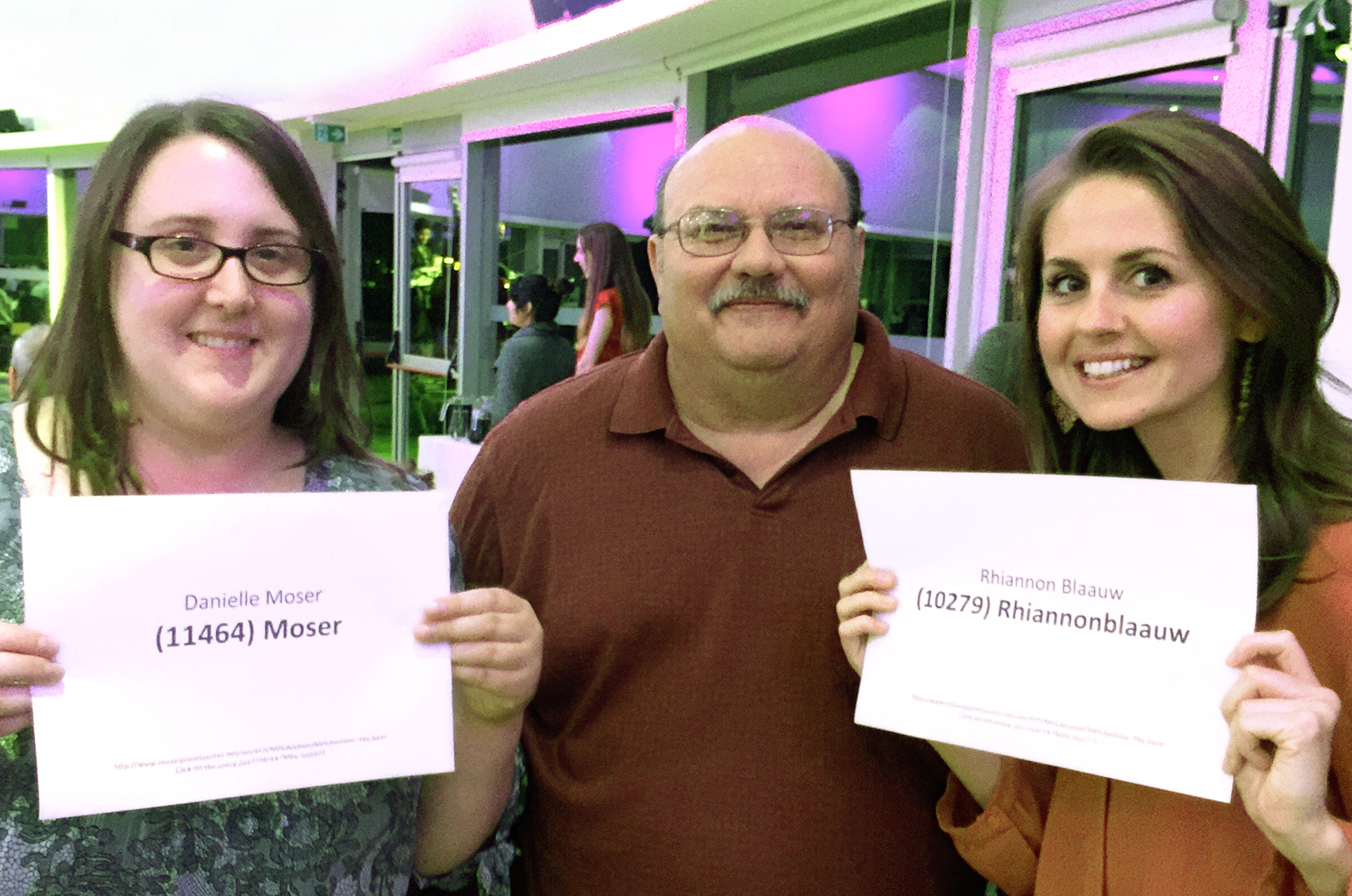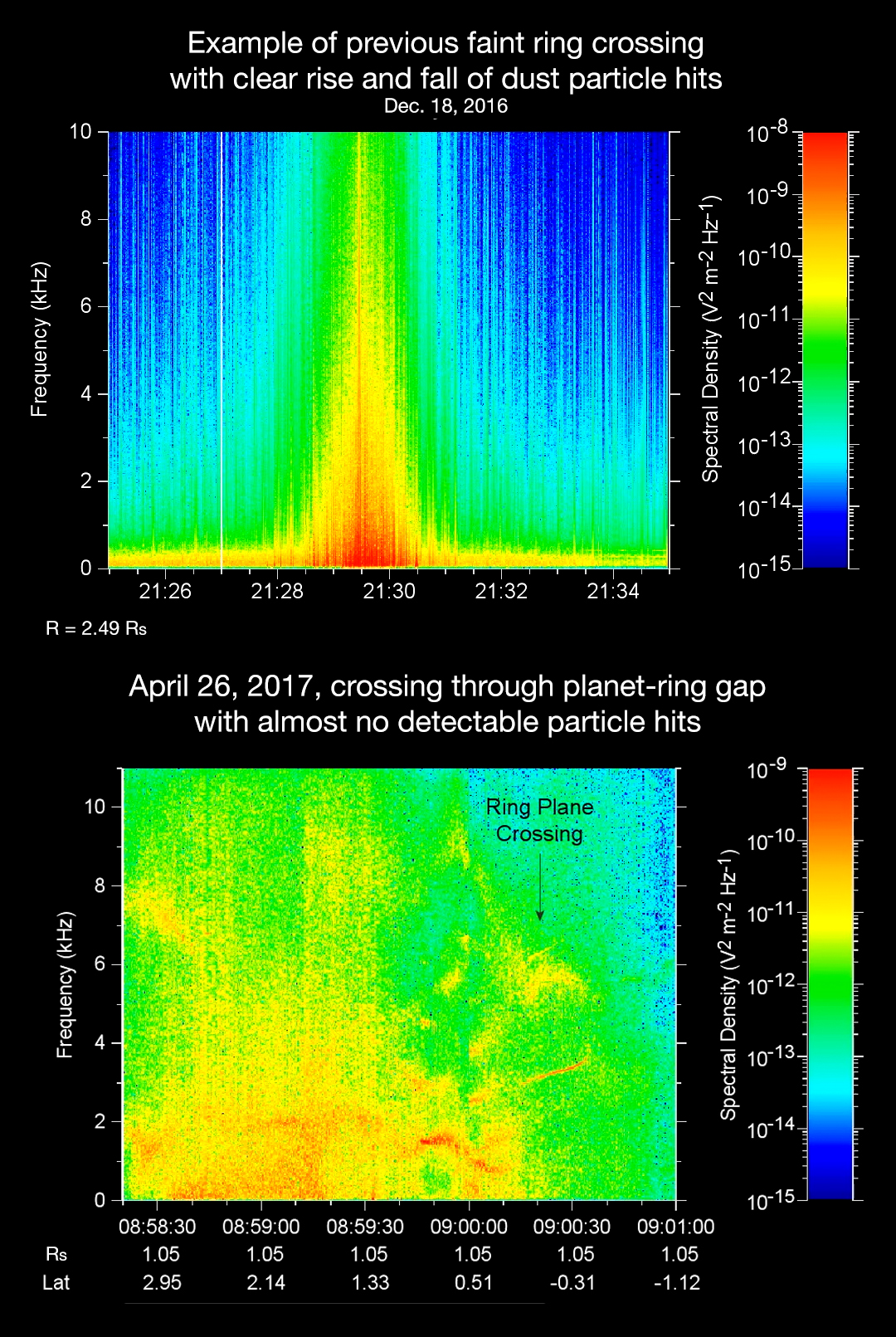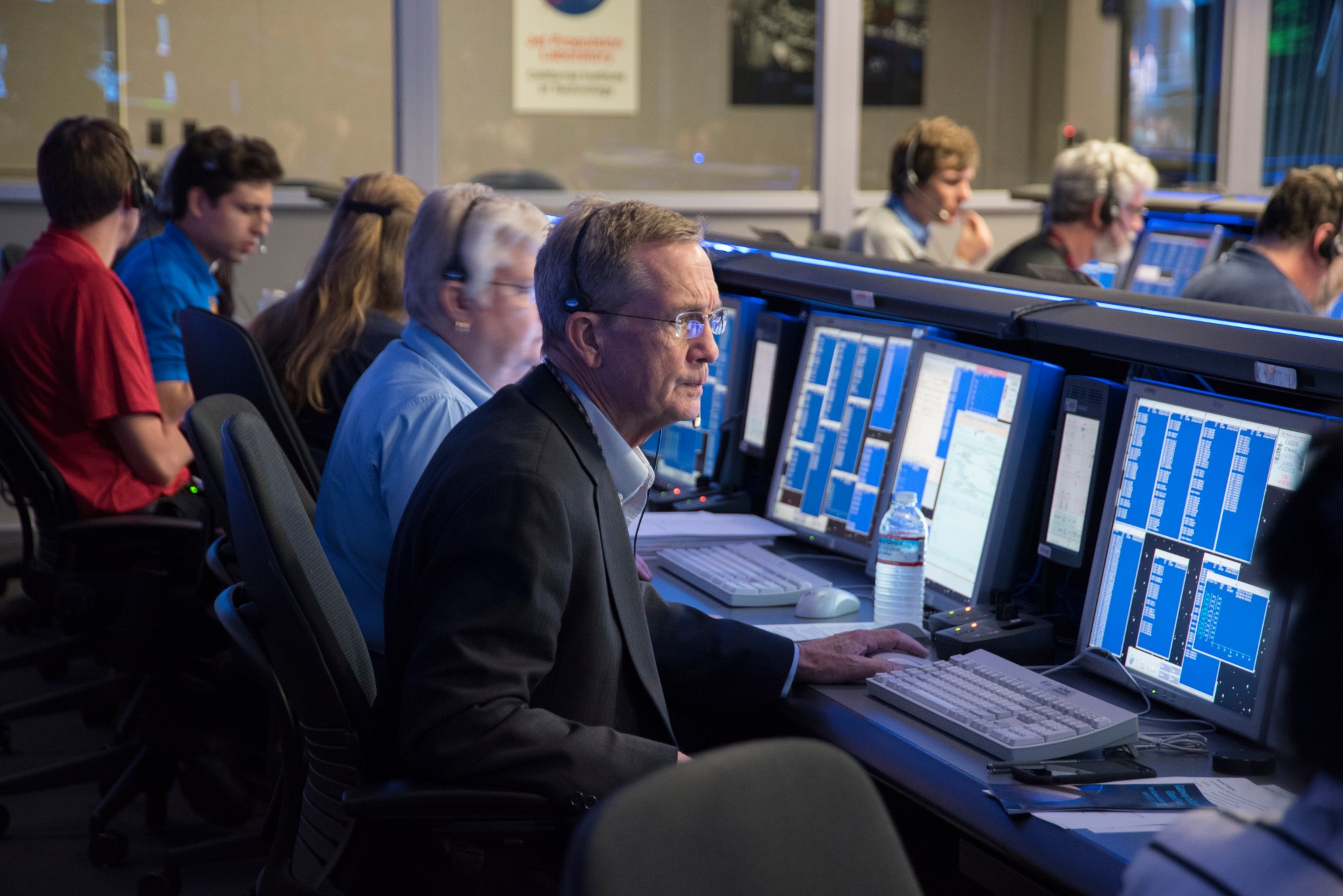In This Week’s Star
- Marshall Team Members Receive ‘Out-Of-This-World’ Honors
- SLS Engine Section Test Article Loaded on Barge Pegasus
- Madison Mayor Paul Finley Addresses Marshall Association April 26
- Marshall Hosts Annual Space Station Science Working Group
- Cassini Finds ‘The Big Empty’ Close to Saturn
- Geek2Geek Event Features Marshall, SLS and Space Station
- Rockets and Rock Legends: Styx Visits Marshall
- NASA’s Fermi Catches Gamma-ray Flashes from Tropical Storms
- This Week in NASA History: Space Shuttle Endeavour Lands After Installing Canadarm2 — May 1, 2001
- Obituaries
Marshall Team Members Receive ‘Out-Of-This-World’ Honors
By Bill Hubscher
While the planets in our solar system are named after mythical gods and goddesses, thousands of asteroids — also known as minor planets — are named after scientists, celebrities, fictional characters and even different cities, states or nations from around the world. When the most recent list of newly named asteroids was released April 14, two of the orbiting rocks bore the names of a pair of meteor scientists at NASA’s Marshall Space Flight Center.
Danielle Moser and Rhiannon Blaauw had asteroids named for them at the Asteroids, Comets & Meteors 2017 Conference in Montevideo, Uruguay, April 14. Their names were put forward by Bill Cooke, head of the Marshall’s Meteoroid Environment Office.
“They both have made significant contributions to meteor science since joining the team,” said Cooke. “Those achievements deserved to be recognized, so I nominated them and the International Astronomical Union — which promotes the science of astronomy and assigns the names – agreed.”
The asteroids in question were discovered in 1981, but were only known by a number until the recent announcement. Now they are officially referred to as 11464 Moser and 10279 Rhiannonblaauw.
Moser and Blaauw help NASA keep tabs on any bright meteors that occur over the continental United States and help Cooke brief NASA Headquarters after one appears. They tend to be very busy during annual meteor showers.
Along with the rest of NASA’s Meteoroid Environment Office, they also study the meteoroid environment when it comes to spacecraft risk and operations. They help design models of the sporadic and shower environments to help predict risk. Blaauw has also developed new techniques for measuring particle distributions within meteor showers, and Moser estimates the energy created by impacts on the moon.
“I am thrilled,” said Blaauw. “I was incredibly honored that Bill Cooke nominated me and I’m beyond excited to have an asteroid orbiting around out there with my name on it!”
“The announcement was a wonderful surprise,” said Moser. “I have a feeling I’ll be keeping tabs on ‘11464 Moser’ for a long time.”
Marshall has other employees with asteroids named after them, including Cooke and Rob Suggs, another colleague in the Meteoroid Environment Office.
“It’s funny how competitive we can get with our asteroids,” Moser said. “For example, Rhiannon’s was discovered first, Bill’s is the brightest, Rob’s has the shortest orbital period, and mine travels farthest from the sun. It’s a friendly competition, of course. We’re all just honored to have something with our names on it in space.”
For more information on 11464 Moser and 10279 Rhiannonblaauw, and to learn about the process of naming asteroids, visit the Minor Planet Center website.
Hubscher, an ASRC Federal/Analytical Services employee, supports Marshall’s Office of Strategic Analysis & Communications.
SLS Engine Section Test Article Loaded on Barge Pegasus
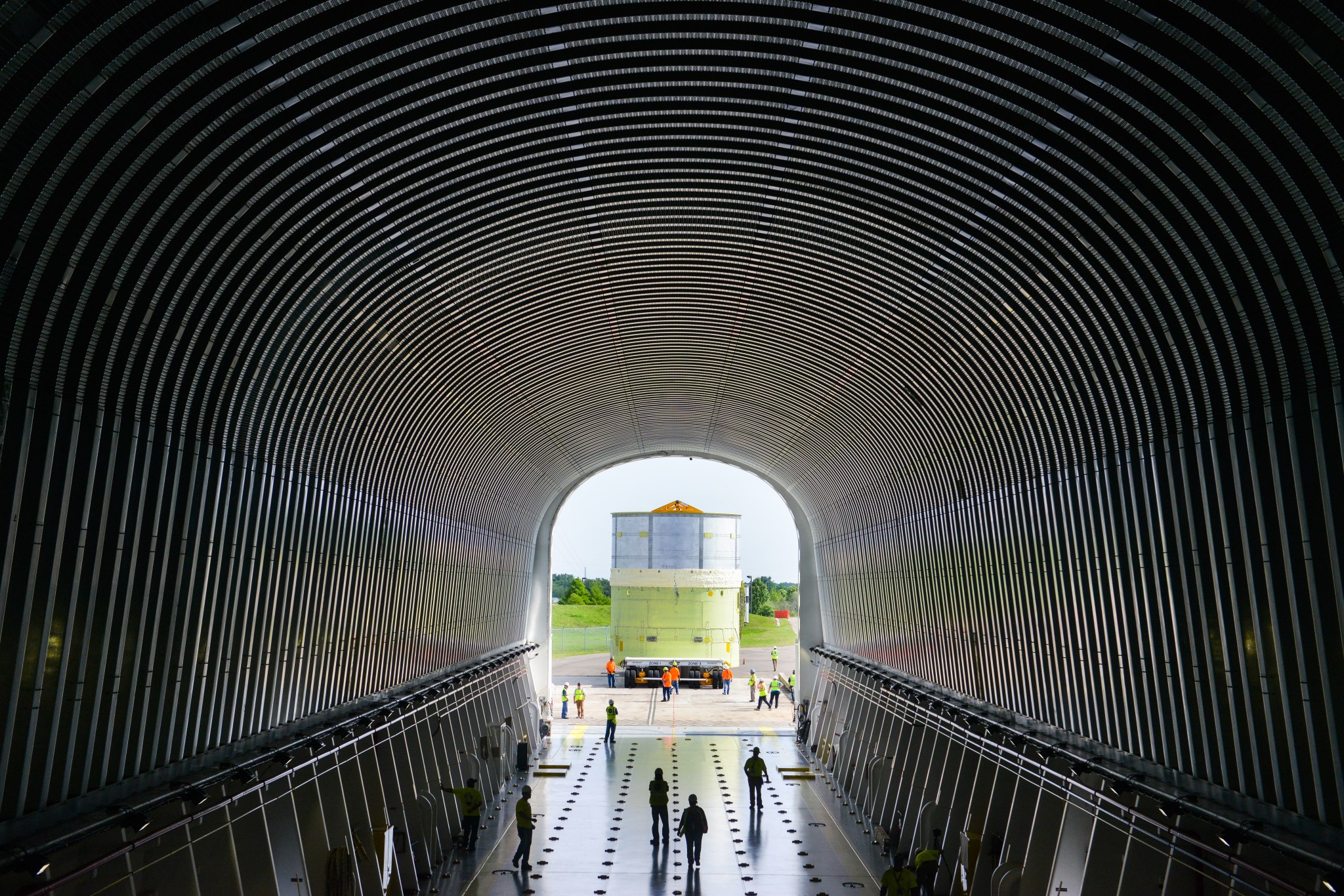
An engine section structural qualification test article for NASA’s new rocket, the Space Launch System, is loaded onto the barge Pegasus at the agency’s Michoud Assembly Facility. The test article will make its way from Michoud to NASA’s Marshall Space Flight Center for structural loads testing. For the test series, hydraulic cylinders will be electronically controlled to push, pull, twist and bend the test article with millions of pounds of force to ensure the hardware can withstand the extreme forces of launch and ascent. The engine section, located at the bottom of the rocket’s core stage, will house the four RS-25 engines and be an attachment point for the two solid rocket boosters. The engine section test article is the first of four core stage test articles manufactured at Michoud and is designed to the same specifications as the engine section that will fly on the first SLS mission with the Orion spacecraft. View more test article images on Flickr. (NASA/Michoud/Jude Guidry)
Madison Mayor Paul Finley Addresses Marshall Association April 26
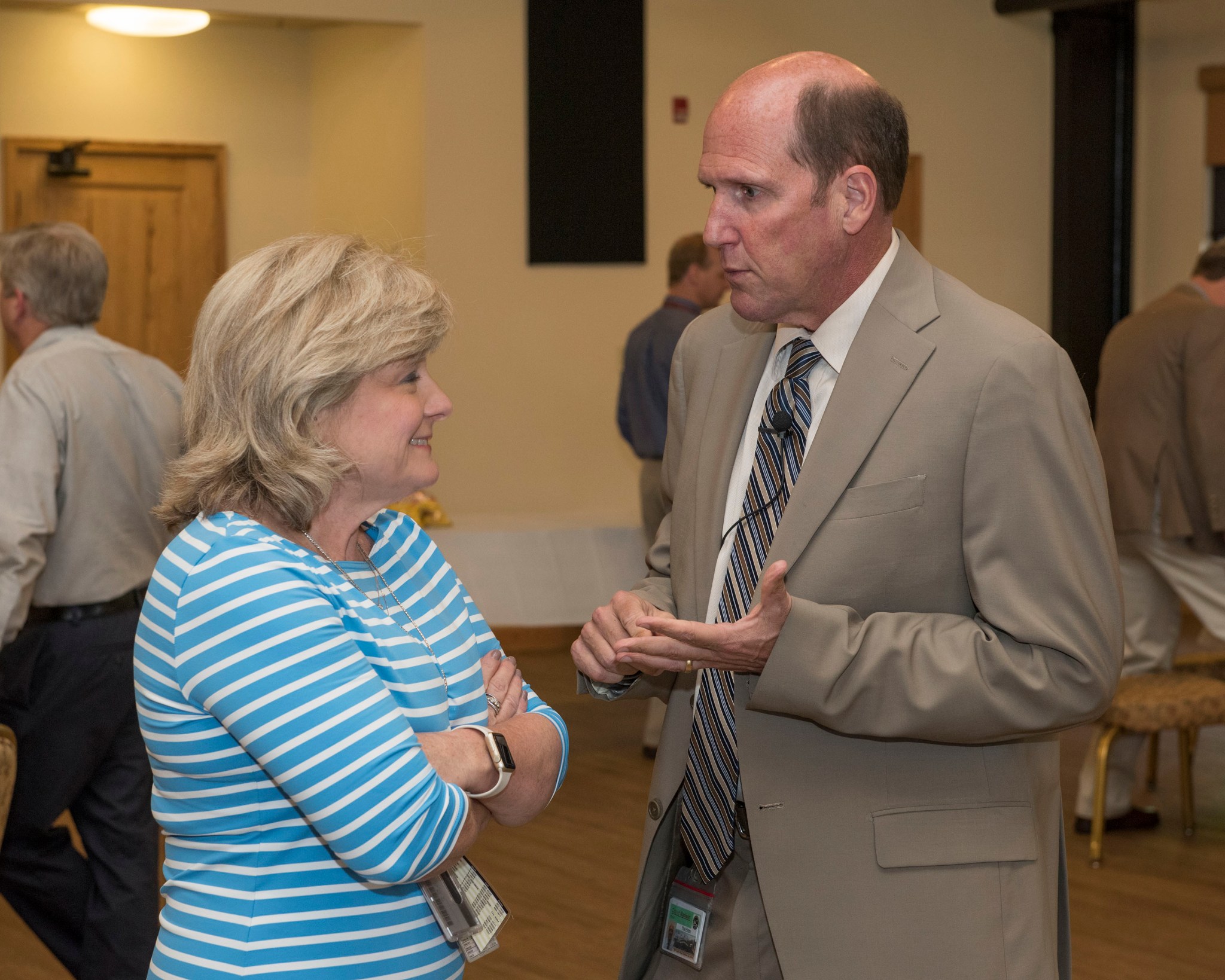
Paul Finley, right, mayor of the city of Madison, Alabama, chats with Jody Singer, deputy director of NASA’s Marshall Space Flight Center, following the April 26 meeting of the Marshall Association. Finley, the guest speaker for the luncheon event, spoke about social and economic changes in Madison County and across the nation, and the role of the concerned citizen in guiding and enacting such changes. He served as mayor of Madison from 2008-2012 and was elected to the post again in 2016. The Marshall Association is a professional, employee service organization, which includes Marshall team members and retirees. For more information, visit the Marshall Association’s ExplorNet page. (NASA/MSFC/Fred Deaton)
Marshall Hosts Annual Space Station Science Working Group
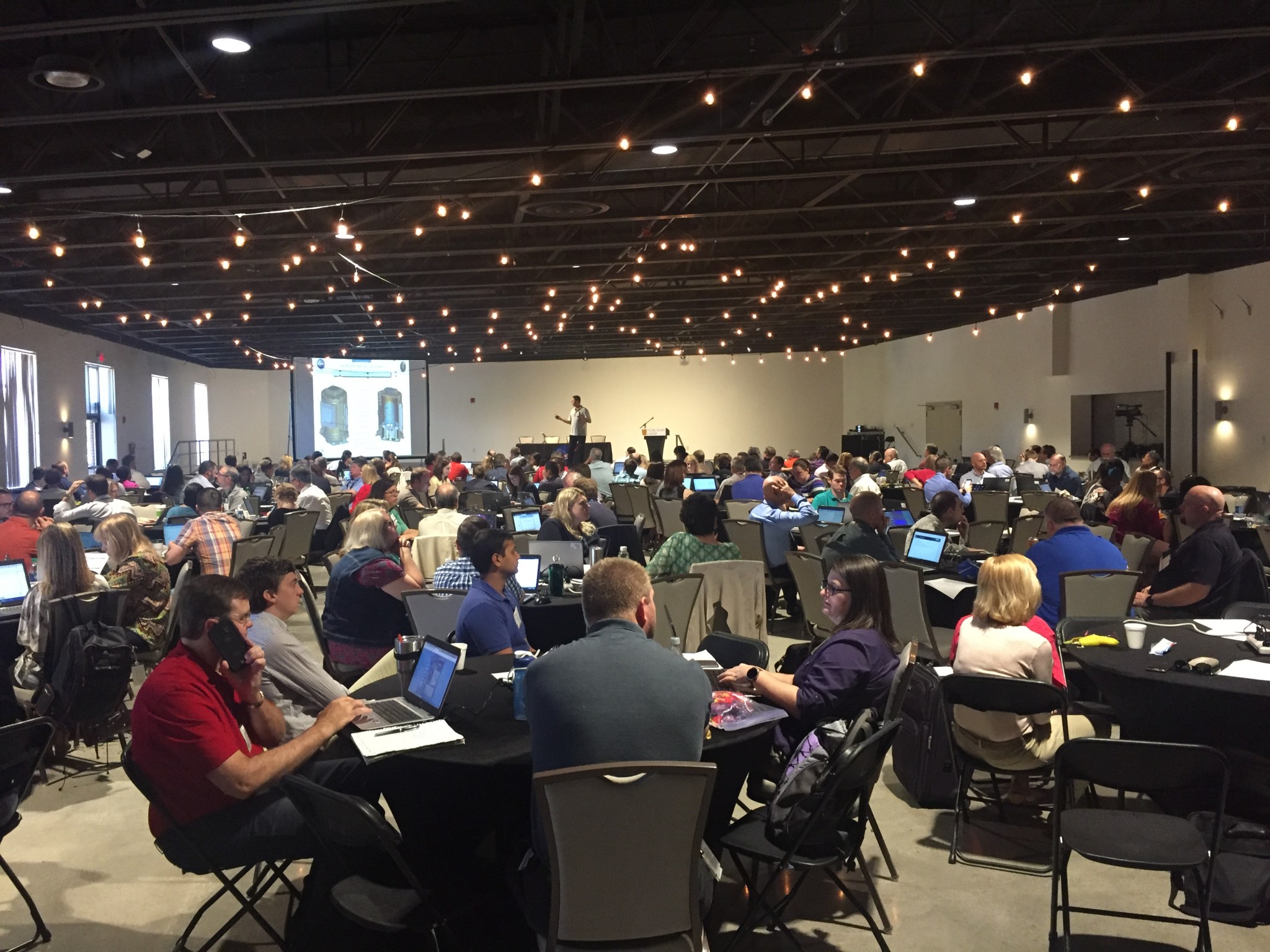
Hundreds of scientists and engineers from around the world, as well as NASA team members, attend the annual Payload Operations and Integration Working Group hosted by and held near NASA’s Marshall Space Flight Center April 25-27. The event brings payload developers, principal investigators and project managers together to coordinate processes, schedules and review the status of scientific payloads currently on or soon launching to the International Space Station. Attendees benefit from panel discussions, experiment overview presentations and exhibit booths about various tools, services and other opportunities available to global scientists and engineers interested in conducting science in orbit. (NASA/MSFC/Christopher Blair)
Cassini Finds ‘The Big Empty’ Close to Saturn
As NASA’s Cassini spacecraft prepares to shoot the narrow gap between Saturn and its rings for the second time in its Grand Finale, Cassini engineers are delighted, while ring scientists are puzzled, that the region appears to be relatively dust-free. This assessment is based on data Cassini collected during its first dive through the region on April 26.
With this information in hand, the Cassini team will now move forward with its preferred plan of science observations.
“The region between the rings and Saturn is ‘the big empty,’ apparently,” said Cassini Project Manager Earl Maize of NASA’s Jet Propulsion Laboratory. “Cassini will stay the course, while the scientists work on the mystery of why the dust level is much lower than expected.”
A dustier environment in the gap might have meant the spacecraft’s saucer-shaped main antenna would be needed as a shield during most future dives through the ring plane. This would have forced changes to how and when Cassini’s instruments would be able to make observations. Fortunately, it appears that the “plan B” option is no longer needed.
There are 21 dives remaining. Four of them pass through the innermost fringes of Saturn’s rings, necessitating that the antenna be used as a shield on those orbits.
Based on images from Cassini, models of the ring particle environment in the approximately 1,200-mile-wide region between Saturn and its rings suggested the area would not have large particles that would pose a danger to the spacecraft.
But because no spacecraft had ever passed through the region before, Cassini engineers oriented the spacecraft so that its 13-foot-wide antenna pointed in the direction of oncoming ring particles, shielding its delicate instruments as a protective measure during its April 26 dive.
Cassini’s Radio and Plasma Wave Science instrument was one of two science instruments with sensors that poke out from the protective shield of the antenna — the other being Cassini’s magnetometer. RPWS detected the hits of hundreds of ring particles per second when it crossed the ring plane just outside of Saturn’s main rings, but only detected a few pings on April 26.
When RPWS data are converted to an audio format, dust particles hitting the instrument’s antennas sound like pops and cracks, covering up the usual whistles and squeaks of waves in the charged particle environment that the instrument is designed to detect. The RPWS team expected to hear a lot of pops and cracks on crossing the ring plane inside the gap, but instead, the whistles and squeaks came through surprisingly clearly on April 26.
“It was a bit disorienting — we weren’t hearing what we expected to hear,” said William Kurth, RPWS team lead at the University of Iowa, Iowa City. “I’ve listened to our data from the first dive several times and I can probably count on my hands the number of dust particle impacts I hear.”
The team’s analysis suggests Cassini only encountered a few particles as it crossed the gap — none larger than those in smoke, about 1 micron across.
Cassini will next cross through the ring plane at 2:38 p.m., May 2, in a region very close to where it passed on the previous dive. During this orbit, in advance of the crossing, Cassini’s cameras have been looking closely at the rings — in addition, the spacecraft has rotated, or “rolled,” faster than engineers have ever allowed it to before, in order to calibrate the magnetometer. As with the first finale dive, Cassini will be out of contact during closest approach to Saturn, and is scheduled to transmit data from this dive on May 3.
The Cassini-Huygens mission is a cooperative project of NASA, the European Space Agency and the Italian Space Agency. JPL, a division of Caltech in Pasadena, designed, developed and assembled the Cassini orbiter and manages the mission for NASA’s Science Mission Directorate.
Geek2Geek Event Features Marshall, SLS and Space Station
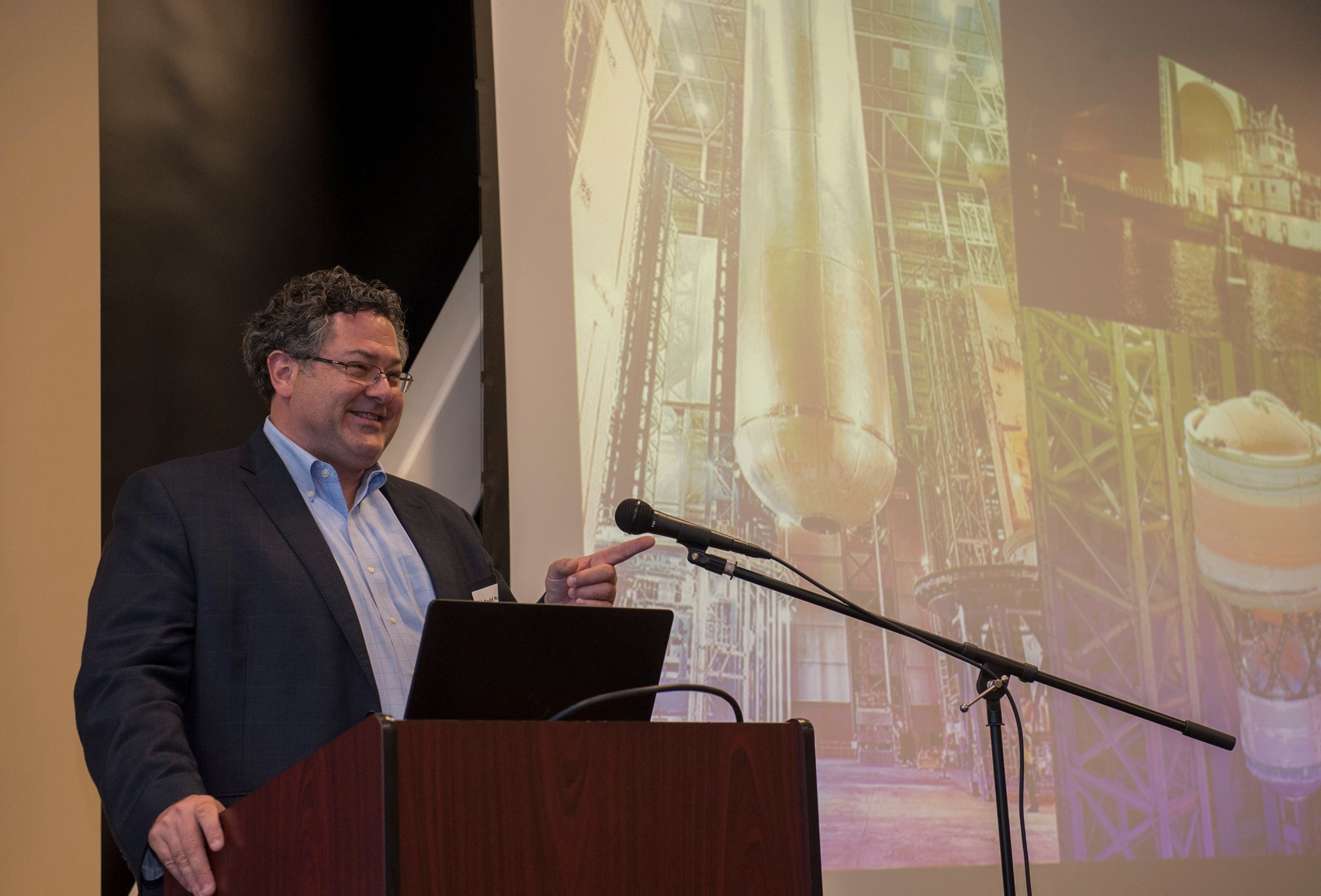
Todd May, NASA Marshall Space Flight Center director, talks about the Space Launch System at Geek2Geek — a quarterly gathering of tech-minded people organized by Cummings Research Park in Huntsville. The event was held at Aegis Technologies on April 27 and featured six NASA team members who offered presentations on SLS, Marshall and the International Space Station. Geek2Geek is a fast-paced, technology-focused discussion where each presenter is given five minutes to present their topics. The goal of the fast-paced format is to ultimately facilitate collaborative and informative discussions about the scientific and technological work being performed in Huntsville. (NASA/MSFC/Emmett Given)
Rockets and Rock Legends: Styx Visits Marshall
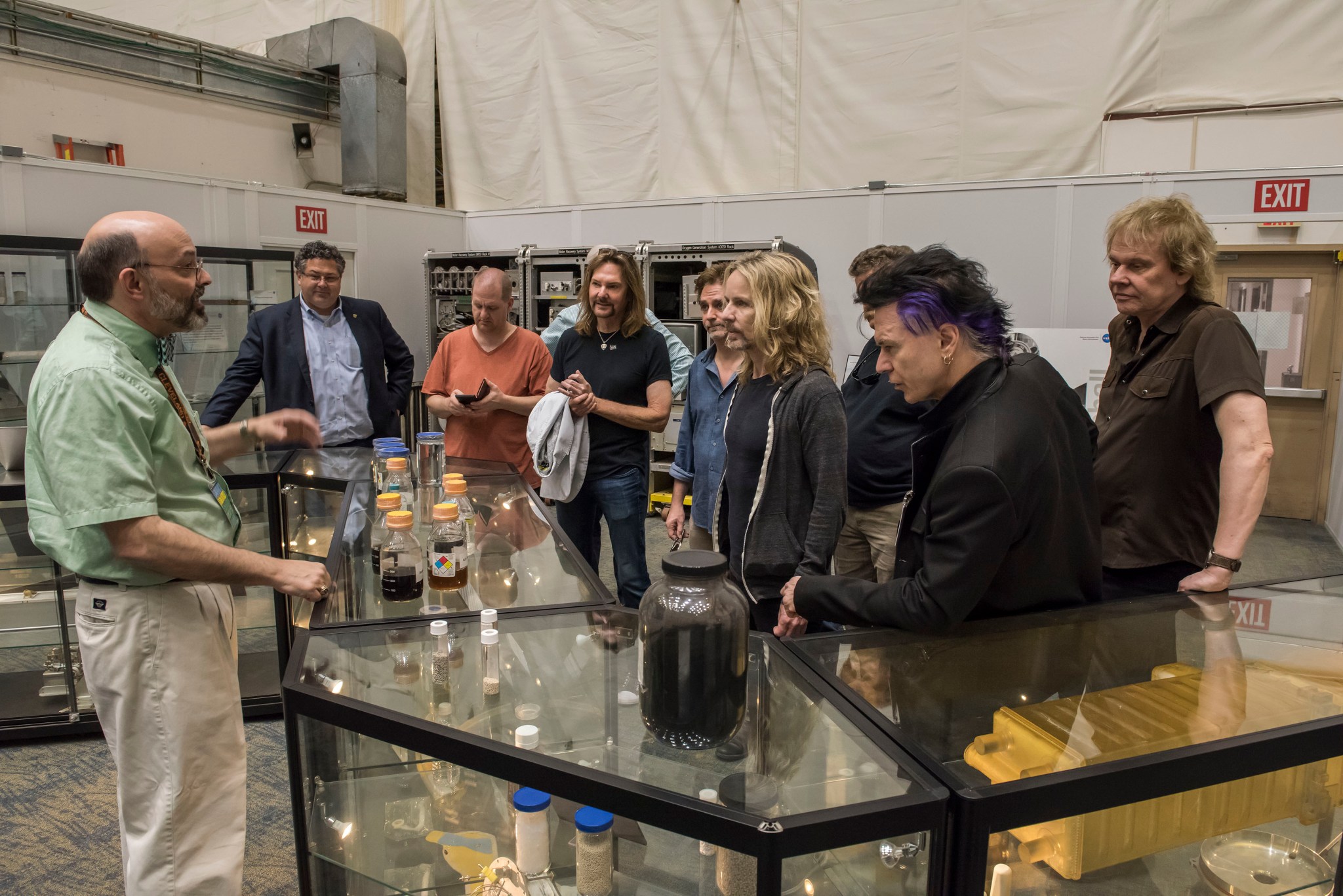
Keith Parrish, left, of the Space Systems Department at NASA’s Marshall Space Flight Center, discusses the process of the Environmental Control and Life Support System with Marshall Center Director Todd May, second from left, and members of the legendary rock band Styx during a tour of Marshall April 27. Inspired by NASA’s goal of sending humans to Mars in the 2030s, the band’s upcoming album, “The Mission,” musically chronicles a futuristic, crewed mission to Mars. While Styx’s mission may be only realized through their iconic sound, NASA’s mission is well underway with the new Space Launch System. (NASA/MSFC/Fred Deaton)
NASA’s Fermi Catches Gamma-ray Flashes from Tropical Storms
About a thousand times a day, thunderstorms fire off fleeting bursts of some of the highest-energy light naturally found on Earth. These events, called terrestrial gamma-ray flashes (TGFs), last less than a millisecond and produce gamma rays with tens of millions of times the energy of visible light. Since its launch in 2008, NASA’s Fermi Gamma-ray Space Telescope has recorded more than 4,000 TGFs, which scientists are studying to better understand how the phenomenon relates to lightning activity, storm strength and the life cycle of storms.
Now, for the first time, a team of NASA scientists has analyzed dozens of TGFs launched by the largest and strongest weather systems on the planet: tropical storms, hurricanes and typhoons. A paper describing the research was published March 16 in the Journal of Geophysical Research: Atmospheres.
“One result is a confirmation that storm intensity alone is not the key factor for producing terrestrial gamma-ray flashes,” said Oliver Roberts, who led the study at the University College Dublin, Ireland, and is a fellow in the postdoctoral program at NASA’s Marshall Space Flight Center. “We found a few TGFs were made in the outer rain bands of major storms, hundreds of kilometers from the powerful eye walls at their centers, and one weak system that fired off several TGFs in a day.”
Scientists suspect terrestrial gamma-ray flashes arise from the strong electric fields near the tops of thunderstorms. Under certain conditions, these fields become strong enough to drive an “avalanche” of electrons upward at nearly the speed of light. When these accelerated electrons race past air molecules, their paths become deflected slightly. This change causes the electrons to emit gamma rays.
Fermi’s Gamma-ray Burst Monitor detects TGFs occurring within about 500 miles of the location directly beneath the spacecraft. In 2012, scientists employed new techniques that effectively upgraded the instrument, increasing its sensitivity and leading to a higher rate of TGF detections. This enhanced discovery rate helped show that most flashes also generate a strong pulse of very low frequency radio waves, signals previously attributed only to lightning. Facilities like the Total Lightning Network and the World Wide Lightning Location Network can pinpoint lightning and TGF-produced radio pulses to within 6 miles anywhere on the globe.
“Combining terrestrial gamma-ray flash data from Fermi’s Gamma-ray Burst Monitor with precise positions from these lightning detection networks has opened up our ability to connect the outbursts to individual storms and their components,” said co-author Michael Briggs, assistant director of the Center for Space Plasma and Aeronomic Research at the University of Alabama in Huntsville.
The team studied 37 TGFs associated with, among other storms, typhoons Nangka (2015) and Bolaven (2012), Hurricane Paula (2010), the 2013 tropical storms Sonia and Emang and Hurricane Manuel, and the disturbance that would later become Hurricane Julio in 2014.
“In our study, Julio holds the record for TGFs, firing off four within 100 minutes on Aug. 3, 2014, another the day after, and then no more for the life of the storm,” Roberts said. “Most of this activity occurred as Julio underwent rapid intensification into a tropical depression, but long before it had even become a named storm.”
What the scientists have learned so far is that TGFs from tropical systems do not have properties measurably different from other flashes detected by Fermi. Weaker storms are capable of producing greater numbers of TGFs, which may arise anywhere in the storm. In more developed systems, like hurricanes and typhoons, TGFs are more common in the outermost rain bands, areas that also host the highest lightning rates in these storms.
Most of the tropical storm TGFs occurred as the systems intensified. Strengthening updrafts drive clouds higher into the atmosphere where they can generate powerful electric fields, setting the stage for intense lightning and for the electron avalanches thought to produce TGFs.
The Fermi Gamma-ray Space Telescope is an astrophysics and particle physics partnership managed by NASA’s Goddard Space Flight Center. The GBM Instrument Operations Center is located at the National Space Science Technology Center in Huntsville.
This Week in NASA History: Space Shuttle Endeavour Lands After Installing Canadarm2 — May 1, 2001
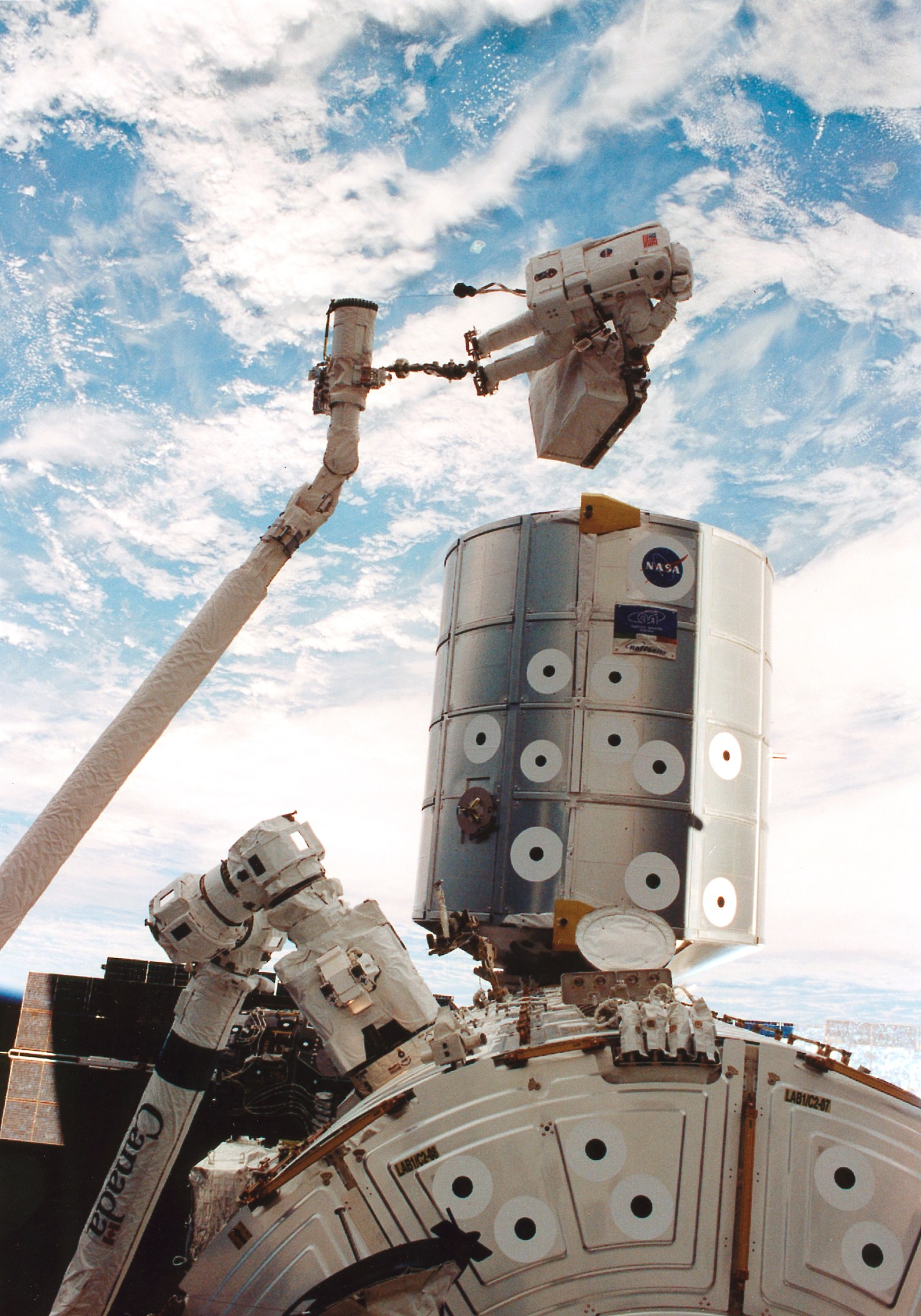
This week in 2001, space shuttle Endeavour and STS-100 returned to Earth after a successful 11-day assembly mission to the International Space Station. The main objective of the mission was to deliver and install the Canadian-built Space Station Remote Manipulator System, or Canadarm2. In this photograph, NASA astronaut Scott Parazynski works on the station while anchored to Canadarm2. The first shuttle mission launched in April 1981, and for the next 30 years the program’s five spacecraft carried people into orbit repeatedly, launched, recovered and repaired satellites, conducted cutting-edge research and built the space station — the largest structure in space. Today, NASA Marshall Space Flight Center’s Payload Operations Integration Center serves as “science central” for the space station, working 24/7, 365 days a year in support of the orbiting laboratory’s scientific experiments. The NASA History Program is responsible for generating, disseminating, and preserving NASA’s remarkable history and providing a comprehensive understanding of the institutional, cultural, social, political, economic, technological, and scientific aspects of NASA’s activities in aeronautics and space. For more pictures like this one and to connect to NASA’s history, visit the Marshall History Program’s webpage. (NASA)
Obituaries
Bertie M. Hovis, 85, of Harvest, Alabama, died April 28. She retired from the Marshall Center in 1990 as a contract specialist.



























